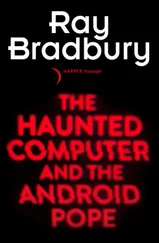By the time Raster Blaster hit, Bill was more than a legend—he was a significant industry in himself. There were many more people buying programs, the price of the programs was going up, and so was the programmer’s share. But running a publishing company turned out to be a drain on his creative time, so Budgeco eventually faded away. He started out publishing the Apple version of his next program but soon grew tired of worrying about marketing it and began shopping around for another publisher—one that would take him on his own terms.
That next program was, like Raster Blaster, a masterpiece. It was called Pinball Construction Set, a program generator in the guise of a game, and it turned out to be another watershed in the programming art, as well as another smash hit in the marketplace.
The origins of Pinball Construction Set are particularly interesting to me, because they involved a challenge that two of our programmers and I set for Bill one summer afternoon, and because they involved as well some obscure but important breakthroughs provided by others in various kinds of computer research. The use of program generators was not unique But Bill’s program generator also included graphic symbols known as icons, and graphic editors that enabled users to create new programs by manipulating those icons—a new kind of human-computer interaction that had been pioneered at high-technology thinktanks like Xerox Palo Alto Research Center and was included in Apple’s new (and then-unreleased) machine, the Macintosh.
The general idea of graphics construction sets first emerged more than two decades ago with Ivan Sutherland’s brilliant Sketchpad program. When Sutherland was a graduate student at MIT in the early 1960s, the standard way of seeing computer output was on teletype machines. Sketchpad was a program that enabled programmers to actually control the computer’s operations by means of graphic symbols that were displayed on a television-like screen. By using a light-pen, the user/programmer could actually create different shapes on the screen, then manipulate the shapes by means of the computer’s processor and store the end product in the computer’s memory.
Innovations happen so fast in the software world and become standards so rapidly that the idea of creating graphics on a screen and storing them in a computer seems old hat to even the youngest computer user today. But in 1961, when Sketchpad was written, this idea was truly revolutionary. The idea of designing a graphic world inside a computer—the concept known as simulation—was another such breakthrough that is now commonplace. Several years after Sketchpad, a computer scientist and educational expert at M.I.T. by the name of Seymour Papert was experimenting with graphics and simulations and a new computer language called LOGO.
One of the key concepts in LOGO was that programming a computer doesn’t have to be as esoteric and difficult as the first computers and the old-time programmers made it seem. The idea behind the LOGO project was to develop a new computer language—one that even children could quickly learn to use. LOGO starts novices on the path to programming not by having them type in unfamiliar commands but by introducing them to a means of controlling graphic displays own as turtle graphics. The turtle was originally a small turtle-shaped robot that crawled around the floor, drawing patterns on pieces of paper, but eventually it became an abstract turtle—a symbol on a computer screen.
Between the older ideas like Sutherland’s Sketchpad and Papert’s LOGO and the newer ideas like icons and program generators, the fundamental concepts of software construction sets had already existed for years when Bill Budge came along with Pinball Construction Set
But although Bill’s program generator was one of the best in the microcomputer world, it was not the first to be developed for that market. The previous summer, Broderbund had published a game called The Arcade Machine that enabled the user to create a variety of “shoot-’em-up games,” admittedly an easier and less general task than constructing a variety of pinball games. And there was a famous piece of software called The Last One that was heavily advertised in 1981 as a generator so powerful that it would be the last program you would ever need to buy. Even before that, another, very sophisticated game generator was designed in 1978 by a game programmer at Atari named Warren Robinett. Robinett decided to do an animated version of the Adventure games that had originated on the mainframe computers at MIT and Stanford and had migrated, via the efforts of people like Scott Adams and me, to the microcomputer world. The original Adventure was strictly a text game with no graphics. In order to produce a version that had animated graphics, Robinett created a simple graphics editor that would allow the player to move through Adventure 's various caves while dragging various graphical objects along on the journey.
When Robinett left Atari, he teamed up with a couple of education experts to create a microworld simulation that took his simple graphics editor into the realm of true program generators. The much-acclaimed program Rocky’s Boots, written by Robinett and Leslie Grimm, published after Pinball Construction Set, is a game that allows children to build various “machines” by putting together various graphical “parts.” One very interesting aspect of this game is the fact that the machine parts are very advanced in that they are actually Boolean logic symbols, while the machines themselves are Boolean logic circuits. The child who uses the game ends up knowing how to design Boolean logic circuits—a skill that was formerly reserved for college mathematics majors or computer science students in graduate school!
With Pinball Construction Set, an even more advanced program generator entered the marketplace. In fact, when it was first released, it had an enormous impact on those who used it because it seemed to be more than just a great game. It looked and felt like a whole new way of using computers. I can remember the first time Bill talked about the idea of programming such a game. The topic came up on the day he, Nasir Gebelli, another set of programmer-entrepreneurs, and I met in Sacramento to talk about the prospect of merging our companies.
It was hardly the kind of giant merger discussion you read about in regard to the old-fashioned computer business, where phalanxes of three-piece-suited attorneys engage in marathon negotiations over hardwood conference tables. As I remember, we spent some time talking in a pizza joint in Sacramento. Nothing came of the merger discussion, but the same people ended up in a conversation at a barbecue I held at my house in San Rafael shortly thereafter. Chris Jochumson, who had created Brøderbund’s The Arcade Machine, was there, and so was David Snider. David had written a bestselling pinball game that Brøderbund sold under the name David’s Midnight Magic. The game was very complex, but it did not give users an option to create their own game from the elements provided.
David was of the opinion that a generalized pinball microcomputer construction set, one that could simulate a wide variety of pinball layouts, couldn’t be created. What with the effect of simulated gravity, and the angles the ball would bounce at, and the effect of bumpers and flippers and obstacles, David felt that there were too many factors involved to generalize. But although David thought that a general pinball game would be too hard to write, Bill was convinced that it could be done. It took him longer than he thought it would take, but he was certainly right.
Читать дальше










